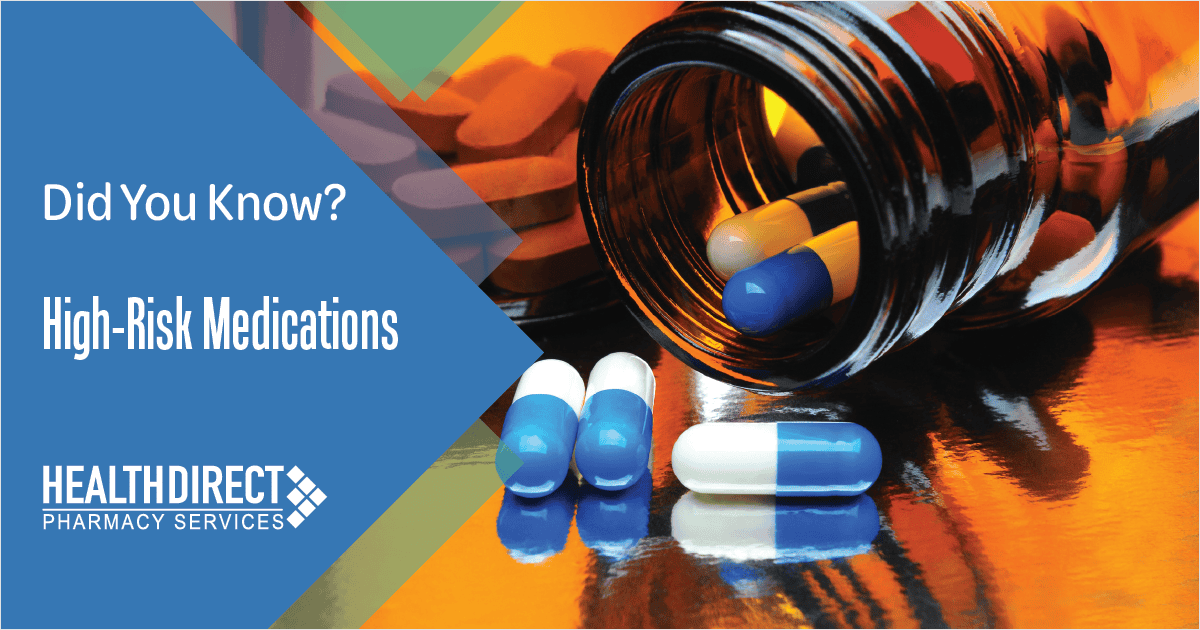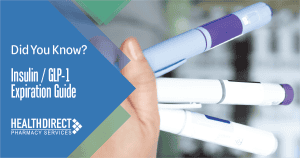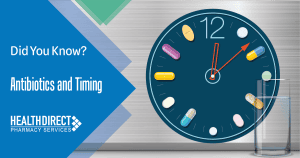From the CMS MDS Manual – N0415: High-Risk Drug Classes: Use and Indication
Health-Related Quality of Life:
- Medications are an integral part of the care provided to residents of nursing homes. They are administered to try to achieve various outcomes, such as curing an illness, diagnosing a disease or condition, arresting or slowing a disease’s progress, reducing or eliminating symptoms, or preventing a disease or symptom.
- Residents taking medications in these medication categories and pharmacologic classes are at risk of side effects that can adversely affect health, safety, and quality of life.
- While assuring that only those medications required to treat the resident’s assessed condition are being used, it is important to assess the need to reduce these medications wherever possible and ensure that the medication is the most effective for the resident’s assessed condition.
- As part of all medication management, it is important for the interdisciplinary team to consider nonpharmacological approaches.
- Educating the nursing home staff and providers about non-pharmacological approaches in addition to and/or in conjunction with the use of medication may minimize the need for medications or reduce the dose and duration of those medications.
For residents’ ordered medications from the drug classes below considered ‘High-Risk’ by CMS:
- Target symptoms and goals for use of these medications should be established for each resident. Progress toward meeting the goals should be evaluated routinely.
- Possible adverse effects of these medications should be well understood by nursing staff. Educate nursing home staff to be observant for these adverse effects.
- Implement systematic monitoring of each resident taking any of these medications to identify adverse consequences early, add documentation to the residents’ care plan.
A review of these high-risk drug classes, with possible adverse reactions to monitor for, and conditions that may increase adverse effect potential are included in this article.
*For additional information, consult the MDS-3.0 RAI Manual v1.19.1 Section N: Medications available from: https://www.cms.gov/files/document/finalmds-30-rai-manual-v1191october2024.pdf
High Risk Medication Class: Opioids
Drugs in this class include but are not limited to:
| Hydrocodone/Acetaminophen | Codeine | Morphine | Tramadol |
| Oxycodone/Acetaminophen | Oxycodone | Oxymorphone | Buprenorphine |
| Codeine/Acetaminophen | Hydromorphone | Fentanyl | Methadone |
Risk Factors – These increase the potential for adverse drug events:
- Opioid naivete
- Opioids used in combination with other CNS depressants (i.e. gabapentinoids, benzodiazepines)
- History of opioid abuse
- Opioid tolerance
- Severe Pain
- Low fluid intake / dehydration
- Low body weight
- History of head injury, traumatic brain injury or seizures
- Recent abdominal surgery
- Advanced age
- Decreased mobility
- Dementia / Parkinson’s/MS/quadriplegia
Possible side effects include but are not limited to:
- Falls
- Hallucinations
- Delusions
- Disorientation / confusion
- Light-headedness
- Drowsiness
- Vertigo / Dizziness
- Lethargy or somnolence
- Unresponsiveness
- Decreased blood pressure, pulse, pulse oximetry, respirations
- Severe constipation, ileus, or impaction
- Nausea
- Agitation
High Risk Medication Class: Anticoagulants & Antiplatelets
Drugs in this class include but are not limited to:
| Warfarin | Eliquis (apixaban) | Plavix (Clopidogrel) |
| Pradaxa (dabigatran) | Xarelto (rivaroxaban) | Aspirin |
| Heparin | Enoxaparin | Brilinta (Ticagrelor) |
Risk Factors – These increase the potential for adverse drug events:
- Anticoagulant, antiplatelet or thrombolytic medication use
- Concurrent use with SSRI or SNIR
- History of stroke or GI bleed
- NSAID medication use while on anticoagulants
- Antibiotics while on anticoagulants
- Amiodarone use while on anticoagulants
- Dietary changes affecting vitamin K intake (warfarin)
Possible side effects include but are not limited to:
- Bruising
- Bleeding (sometimes fatal)
- Bleeding from the nose, gums, wounds, surgical sites, IV site
- Low platelet count
- Blood in urine, feces or vomit
- Hypotension
- Ocular hemorrhage
High Risk Medication Class: Diabetes Medication
Drugs in this class include but are not limited to:
| Insulin | |||
|---|---|---|---|
| Lantus/Toujeo/Basaglar (Glargine) | Humalog/Admelog/Lyumjev (Lispro) | Novolog/Fiasp (Aspart) | Levemir (Detemir) |
| Tresiba (Degludec) | Humulin N (Isophane insulin NPH) | Humulin R (Regular insulin) | Novolog Mix 70/30 |
| Hypoglycemics | |||
|---|---|---|---|
| Metformin | Januvia (Sitagliptin) | Onglyza (Saxagliptin) | Tradjenta (Linagliptin) |
| Glipizide | Jardiance (Empagliflozin) | cFarxiga (dapagliflozin) | Invokana (canagliflozin) |
| Glyburide | Glimepiride | Trulicity | Ozempic |
| Repaglinide | Acarbose | Pioglitazone | Victoza |
Risk Factors – These increase the potential for adverse drug events:
- Insulin use, especially sliding scale
- Decrease in oral intake while taking antidiabetic medication
- Infection
- Concurrent illness
- Frequent refusals of medication
- Multiple hypoglycemic agent use
Possible side effects include but are not limited to:
- Hypoglycemia
- Falls
- Headache
- Shakiness, nervousness, sweating
- Change in mental status
- Hunger
- Nausea
- Weakness
- Incoordination
- Unconsciousness
- Seizures
- Rapid Heartbeat
- Ketoacidosis
- Diarrhea
High Risk Medication Class: Antibiotics
Drugs in this class include but are not limited to:
| Amoxicillin | Cephalexin | Cefdinir | Doxycycline |
| Sulfamethoxazole-Trimethoprim | Amoxicillin-Clavulonic Acid | Azithromycin | Ciprofloxacin |
| Vancomycin | Nitrofurantoin | Clindamycin | Levofloxacin |
Risk Factors – These increase the potential for adverse drug events:
- History of renal disease or insufficiency
- History of hepatic disease or insufficiency
- Advanced age
- Dehydration
- Electrolyte imbalance
- Previous infection with C. Diff.
Possible side effects include but are not limited to:
- Diarrhea
- Loss of appetite
- Flushing
- Rash
- Elevated kidney or liver function tests
- Elevated serum potassium
- Decrease in platelets
- Nausea / vomiting
- Dizziness
- Lethargy
- Ventricular arrhythmias
- Confusion
- Secondary infections (Candidiasis, C. difficile)
High Risk Medication Class: Diuretics
Drugs in this class include but are not limited to:
| Furosemide | Bumetanide | Hydrochlorothiazide |
| Metolazone | Indapamide | Chlorthalidone |
| Torsemide | Spironolactone | Eplerenone |
Risk Factors – These increase the potential for adverse drug events:
- Advanced age
- Dependence in ADLs (especially eating)
- Diagnosis of dementia
- Fluid Restrictions
- Recent vomiting or diarrhea
- Hot weather
- Use of medical devices that increase fluid needs (air-fluidized mattress)
Possible side effects include but are not limited to:
- Abnormal electrolytes
- Dry skin and mucous membranes
- Thirst
- Confusion
- Concentrated urine/decreased output
- Lethargy
- Low blood pressure/ orthostatic hypotension
- Muscle cramps
- Orthostatic hypotension
- Renal failure
- Azotemia
High Risk Medication Class: Anticonvulsants
Drugs in this class include but are not limited to:
| Phenytoin | Lamotrigine | Oxcarbazepine |
| Levetiracetam | Phenobarbital | Gabapentin |
| Lacosamide | Divalproex | Topiramate |
| Primidone | Carbamazepine | Zonisamide |
| Diazepam | Clonazepam | Clobazam |
Risk Factors – These increase the potential for adverse drug events:
- Advanced age
- Kidney impairment
- Liver impairment
- Concurrent administration of antidepressants, benzodiazepines, antibiotics
Possible side effects include but are not limited to:
- Drowsiness
- Nausea / vomiting
- Weight gain or loss
- Severe mental status or mood changes
- Changes in gait, balance or coordination
- Blurred vision
- Fatigue / hypersomnia
High Risk Medication Class: Psychotropics
Drugs in this class include but are not limited to:
| ANTISPYCHOTIC | ||
|---|---|---|
| aripiprazole (Abilify) | lumateperone (Caplyta) | perphenazine (Trilafon) |
| asenapine (Saphris) | lurasidone (Latuda) | quetiapine (Seroquel) |
| chlorpromazine (Thorazine) | olanzapine (Zyprexa) | risperidone (Risperdal) |
| clozapine (Clozaril) | ziprasidone (Geodon) | thioridazine (Mellaril) |
| fluphenazine (Prolixin) | loxapine (Loxitane) | thiothixene (Navane) |
| haloperidol (Haldol) | paliperidone (Invega) | trifluoperazine (Stelazine) |
| iloperidone (Fanapt) | Pimavanserin (Nuplazid) | Brexpiprazole (Rexulti) |
| ANTIDEPRESSANT | ||
| bupropion (Wellbutrin/ Zyban) | fluoxetine (Prozac) | paroxetine (Paxil) |
| citalopram (Celexa) | amitriptyline (Elavil) | sertraline (Zoloft) |
| desipramine (Norpramin) | imipramine (Tofranil) | trazodone (Desyrel) |
| doxepin (Silenor) | mirtazapine (Remeron) | venlafaxine (Effexor) |
| duloxetine (Cymbalta) | nefazodone (Serzone) | vilazodone HCL (Viibryd) |
| escitalopram (Lexapro) | nortriptyline (Pamelor) | vortioxetine (Trintellix) |
| ANXIOLYTIC | ||
| alprazolam (Xanax) | diazepam (Valium) | oxazepam (Serax) |
| buspirone (BuSpar) | lorazepam (Ativan) | clonazepam (Klonopin) |
| chlordiazepoxide (Librium) | clorazepate (Tranxene) | fluvoxamine (Luvox) |
| SEDATIVE / HYPNOTIC | ||
| flurazepam (Dalmane) | estazolam (ProSom) | ramelteon (Rozerem) |
| zaleplon (Sonata) | eszopiclone (Lunesta) | temazepam (Restoril) |
| zolpidem (Ambien) | lemborexant (Dayvigo) | triazolam (Halcion) |
Risk Factors – These increase the potential for adverse drug events:
- PRN or routine use of psychotropic medication
- Use of more than one psychotropic medication including more than one drug from the same class or different class
- Advanced age
- Polypharmacy
- Dementia / cognitive impairment
- ADL dependence
Possible side effects include but are not limited to:
- Falls
- Sedation
- Confusion
- Cardiac arrhythmias
- Orthostatic hypotension
- Destabilized blood sugar
- Akathisia
- Parkinsonism
- Anticholinergic effects
- Metabolic syndrome
Narrow Therapeutic Index/High Risk for Drug Toxicity
Examples of these drugs include but are not limited to:
| Lithium | Valproic Acid | Digoxin |
| Levothyroxine | Theophylline | Phenytoin |
| Warfarin |
Risk Factors – These increase the potential for adverse drug events:
- Advanced age
- History of hepatic impairment or disease
- History of renal impairment or injury
- Hypokalemia
- Hypomagnesaemia
- Dehydration
- Decreased PO intake
- Hyperkalemia
Possible side effects include but are not limited to:
- Severe mental status or mood changes
- Changes in gait / balance or coordination
- Drowsiness
- Loss of consciousness
- Cardiac dysrhythmia
- Slurred speech
- Seizures
- Nausea / vomiting
- Diarrhea
- Jaundice
- Abdominal pain
- Visual disturbances
References:
- CMS’s MDS-3.0 RAI Manual v1.19.1 Section N: Medications: https://www.cms.gov/files/document/finalmds-30-rai-manualv1191october2024.pdf
- Clinical Pharmacology. Drug Monographs, various. Accessed Online, October 2024. Available from: https://www.clinicalkey.com/pharmacology/




